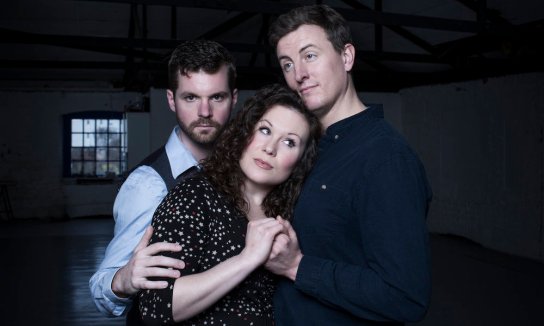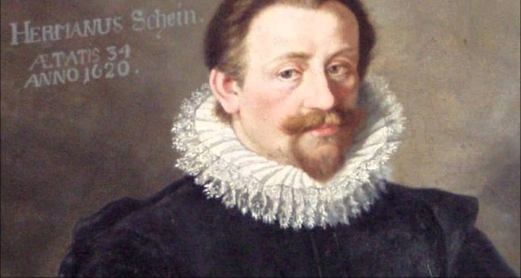How Aria? (the penny eventually dropped with me… a pun on How are ya!) was the first of Irish National Opera’s outreach performances for 2020. Presented in conjunction with St. Patrick’s Mental Health Services as part of the First Fortnight festival. An annual series of events which hopes to shine a light on mental health issues through a celebration of arts and culture. The evening was a mix of poetry, discussion and music featuring a European premiere performance of ‘Goldbeater’s Skin’ by American composer Christopher Cerrone to a text by poet George Calvin Waldrep and a world premiere performance of ‘As Above, So Below’, a piece specially written for this event which was a collaboration between composer Amanda Feery, poet Stephen James Smith and users of the services at St. Patrick’s Hospital.

Poet Stephen James Smith and composer Amanda Feery.
Music was provided by Bangers & Crash Percussion Group with vocal accompaniment by mezzo-sopranos Dominica Williams and Bríd Ní Ghruagáin under the baton of conductor Elaine Kelly. The performance was held in the very comfortable lecture theatre at St. Patrick’s Hospital where a relatively full house greeted the performers, (oh! if all theatre seating had a table!). I had heard Goldbeaters Skin before in a couple of online performances and was also familiar with a number of pieces by Amanda Feery. I particularly like ’Vultures’ and ‘Gone to Earth’. I was also keen to see the various drums, xylophones, bells and improvised instruments played live!
The evening opened with two poems written and read by Stephen James Smith. One about his home town of Dublin, a roll call of impressions and observations which unfortunately he raced through, and a beautifully moving poem to his mother which was one of the highlights of the evening.

Bangers and Crash Percussion Group and Composer Christopher Cerrone.
The musical part of the evening opened with ‘Goldbeater’s Skin’, a piece which was composed for the University of Notre Dame and premiered in 2017. Sung with great clarity and feeling by Dominica Williams it is a meditation on relationships while the protagonist takes a walk through a winter landscape with her companion. It consists of seven sections, two of which are percussion alone and explore the various rhythms & sounds made by wood and metal. A deeply introspective and contemplative work with an otherworldly feel, the flowing and ethereal atmosphere only interrupted by the ‘What happens’ sixth section with its repeated stridently spoken passages. An homage to the poem ‘Jubilate Agno’, by the English religious poet Christopher Smart who was himself incarcerated for insanity in 1757.
‘As Above, So Below’ followed in a stylistically similar vein which is understandable given the limited palate and nuances of the available instruments. The text was developed in workshops by the hospital’s service users under the guidance of Stephen James Smith. Quite dark and accusatory at times it articulated some of the thoughts and concerns of those who feel outside of or ignored by broader society.
‘Closed eyes will happily take the praise
For the sponsored suicide walk
They took once upon a time’
Musically it was quite angular and brash and some of the more vigorous percussive passages occasionally fought with Bríd Ní Ghruagáin’s very articulate and attractive singing. She often battled valiantly against a very loud and often repetitive bass drum. An interesting piece nonetheless but one which lacked a certain subtlety, flow and variation.

Mezzo-sopranos Bríd Ní Ghruagáin and Dominica Williams.
It was an enjoyable evening but musically it only held a certain appeal for me. I found the drumming as often competed with and overpowered the singing as complement it. Lacking a broader musical palate it was the type of performance which has a fairly limited window of interest for me. Goldbeaters Skin is about 20 minutes long and As Above, So Below a touch shorter. Anything longer could have become a touch trying and repetitive.
A performance of ‘Goldbeater’s Skin’ with Elspeth Davis & Sandbox Percussion is here
A performance of Amanda Feery’s ‘Vultures’ by Crash Ensemble is here








































